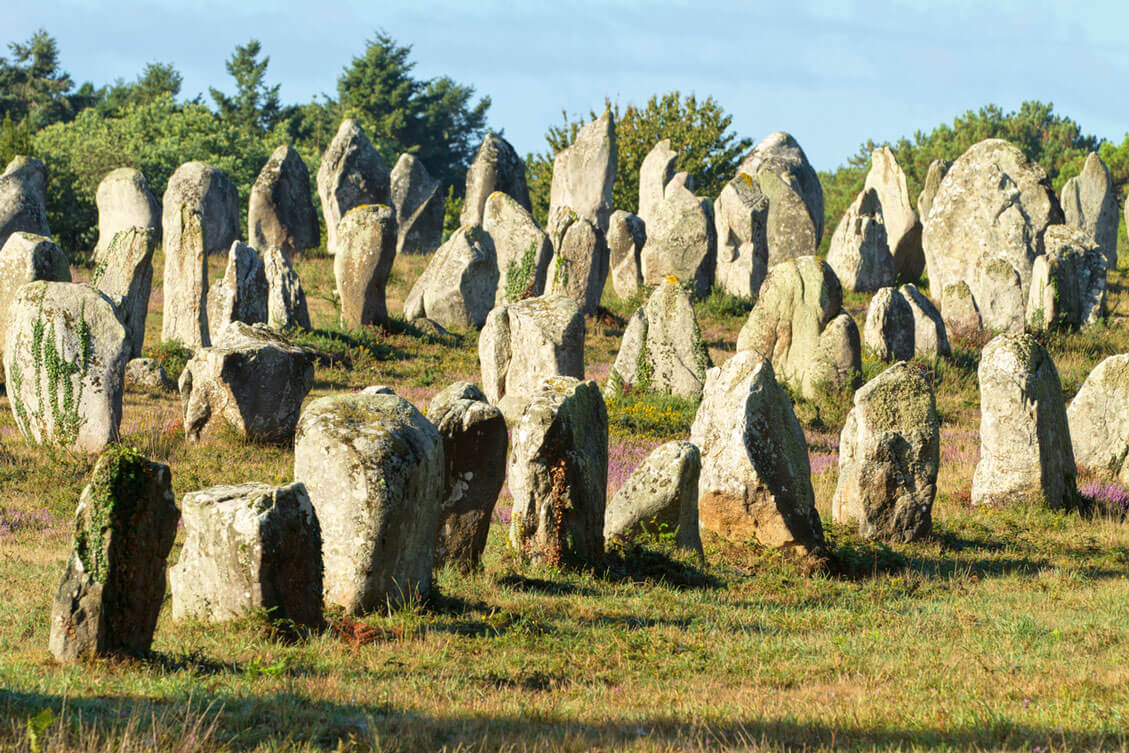1/1 Oops. Incorrect.
0%
0pts Earned
0/1correct
20/20
The Sacsayhuamán fortress is located in what historic capital city?
Sacsayhuamán is a three-tiered landmark containing the ruins of a fortress within the ancient Inca capital of Cuzco, located in modern-day Peru. The site is believed to be the remnants of a larger fortress complex, though any towers that once stood on site have since been destroyed. The stones are unusual in that they’re not precisely constructed, but rather individually built to fit.
Source: Atlas ObscuraBabylon, Iraq
22%
Thebes, Greece
10%
Cuzco, Peru
41%
Xi’an, China
26%
19/20
What shape is the Neolithic observatory located in Goseck, Germany?
The Goseck Circle — or Goseck Sun Observatory — is a mysterious circular structure built around 4900 BCE. It’s believed the circle was used for ritualistic and sacrificial purposes, as well as celestial observation until 4700 BCE. The Goseck Circle was rediscovered in 1991 amid a nondescript wheat field. It was excavated in the 2000s and opened to the public in 2005.
Source: Atlas ObscuraSquare
5%
Triangle
17%
Circle
34%
Rhombus
44%
18/20
Malta’s Hagar Qim is one of the earliest buildings made of what material?
Ħaġar Qim is one of the most notable structures in a series of the Megalithic Temples of Malta. This UNESCO World Heritage Site dates back to the fourth millennium BCE, making Ħaġar Qim among the oldest free-standing stone buildings on the planet. The ancient relics found here are considered architectural masterpieces given the limited resources available at the time.
Source: UNESCOGlass
11%
Stone
56%
Wood
19%
Steel
14%
17/20
The Diquís Spheres are located on Isla del Caño in what country?
A mysterious series of 300 polished stone spheres are located on the Costa Rican island of Isla del Caño. The spheres are attributed to the ancient Diquís peoples, though their origins date anywhere from between 200 BCE to the 16th century CE. The stones were uncovered in the 1930s by employees of the United Fruit Company who were clearing the jungle to build a plantation.
Source: The Museum of Unnatural MysteryAndorra
5%
Colombia
33%
Costa Rica
48%
Argentina
14%
16/20
Palenque is an ancient city that once thrived under what civilization?
The ancient ruins of Palenque, dating from approximately 226 BCE to 799 CE, contain remarkable examples of Maya architecture. The city-state thrived for five centuries before it was mysteriously abandoned, leaving behind a series of temples in the Mexican jungle. Palenque was rediscovered after 900 years, along with the intact tomb of Mayan king Pakal, who ruled the region in the 7th century.
Source: Washington PostCarthage
10%
Maya
70%
Phoenicia
15%
Assyria
5%
15/20
What makes Japan’s Yonaguni Monument unique?
In the 1980s, divers discovered what appears to be a rectangular monument, measuring 165 feet long and 65 feet wide, near Japan’s Yonaguni Island. Some scholars believe that it is the remains of a pyramid, perhaps from a long-lost submerged city belonging to an ancient civilization. Meanwhile, others insist the rocks have been shaped by millennia of the ocean’s currents.
Source: BritannicaIt’s symmetrical
7%
It’s underwater
42%
It has a staircase to nowhere
27%
It changes color
25%
14/20
What country contains the largest ruins in sub-Saharan Africa?
The Great Zimbabwe Ruins — built sometime between the 11th and 15th centuries — are the largest African ruins complex south of the Sahara Desert. The stone walls feature turrets and complex stairways, just a few of the architectural features that make this site stand out among other similar ruins found across the continent from that time.
Source: Great Zimbabwe RuinsCameroon
19%
Lesotho
19%
Kenya
25%
Zimbabwe
37%
13/20
Where can you visit the Plain of Jars?
The remote plains of Xieng Khouang Plateau in Laos feature thousands of ancient stone jars that date back to the Iron Age. Some of the giant jars weigh as much as 10 tons and measure nearly 10 feet tall. Scientists are unsure how the jars were transported to the empty landscape and what their purpose was. One group of archaeologists believes the jars may have been giant urns commemorating the dead.
Source: Ancient OriginsKenya
18%
Belgium
7%
Chile
30%
Laos
45%
12/20
Scientists believe Turkey’s Göbekli Tepe might be the world’s first what?
Could a set of ruins in southeastern Turkey be remnants of the world’s first temple? That’s one of the key questions archaeologists ponder as they explore Göbleki Tepe, a series of huge stone pillars that are some 6,000 years older than Stonehenge. Now a UNESCO World Heritage Site, the landmark was ignored for centuries, dismissed as little more than a cemetery. In the mid-1990s, excavations began and experts soon realized it was a treasure trove of history.
Source: Smithsonian MagazineTemple
41%
School
30%
Burial site
24%
Pyramid
5%
11/20
A Stonehenge-like structure was discovered in which of the Great Lakes?
In 2007, archaeologists uncovered a mysterious circular alignment of stones in Lake Michigan’s Grand Traverse Bay. After further research, it’s believed the stones were placed there around 9,000 years ago, at a time when the bay likely didn’t yet exist. The curious site even includes a potential petroglyph depicting an elephant-like creature.
Source: WRKRLake Michigan
38%
Lake Huron
19%
Lake Superior
29%
Lake Ontario
13%
10/20
Africa's Namib Desert features thousands of mysterious rings called what?
In the grasslands of southern Africa's Namib Desert, unexplained "fairy circles" have baffled scientists for years. Short grasses ring the barren, circular patches, which range from 10 to 65 feet in diameter. Thousands of these mysterious rings stretch out over hundreds of miles of desert. Namibian legend says the gods created them by carelessly leaving their giant footprints in the red dirt.
Source: Science FridayEternal spheres
21%
Fairy circles
53%
Patom craters
19%
Giant’s causeway
7%
9/20
Meroë, Sudan, is best known for what ancient structures?
The pyramids of Meroë in the Sudanese desert date back to the ancient Kingdom of Kush, which reigned from 780 BCE to 350 CE. The pyramids are constructed in a Nubian style, possessing sharp angles and narrow footprints that offer a stark contrast to the more famous pyramids of Egypt. With over 200 pyramids on site, the deserts of Meroë offer an astounding glimpse into the region’s mysterious past.
Source: Atlas ObscuraDefensive walls
32%
Pyramids
46%
Temples
17%
Lighthouses
5%
8/20
Ireland’s ancient Newgrange originally functioned as what?
Newgrange is a sophisticated paleolithic passage tomb constructed around 320 BCE. It was later abandoned when the Celts arrived in Ireland. Ongoing excavation and study of the site continue to uncover details about its sophisticated Stone Age engineering. Archaeologists discovered that the tomb was aligned so the rising sun on the winter solstice flooded the main chamber with light. Standing stones in the surrounding landscape also appear to have distinct astronomical and calendar purposes.
Source: Newgrange.comTemple
27%
Farm
10%
Art gallery
1%
Tomb
61%
7/20
The mysterious Cahokia Mounds are located near what major U.S. city?
Cahokia is an ancient city found in modern-day southern Illinois, eight miles outside of St. Louis. The site was once a thriving settlement built by the Mississippian tribe, though it was mysteriously abandoned by the mid-14th century. What remains are 72 surviving earthen mounds, and archaeologists are unsure what their original purpose was. Monk’s Mound, the largest mound, serves as the centerpiece of the 2,200-acre historic site.
Source: The GuardianSeattle, Washington
5%
St. Louis, Missouri
56%
Albuquerque, New Mexico
29%
Pittsburgh, Pennsylvania
10%
6/20
Where can you find the geometric designs of the Nazca Lines?
The Nazca people who lived in southern Peru’s Nazca Desert created the Nazca Lines between 200 and 700 CE. The hundreds of geometric designs — ranging from simple shapes to plants and animals — have long intrigued researchers, who believe they may have been astronomical maps, indicators of sacred routes, or even water troughs. An alternative take is that they were created to be observed by deities from the sky.
Source: History.comCosta Rica
3%
Mexico
20%
Peru
76%
Hawaii
1%
5/20
Visitors flock to Stonehenge for what annual event?
The enormous stones at Stonehenge are estimated to have been placed between 2500 BCE and 2200 BCE, and the neolithic monument continues to mystify visitors from all over the world. Many archaeologists believe Stonehenge was a spiritual site designed to align with the movements of the sun. Tourists flock to the site on the summer solstice, when sunlight rises above the Heel stone at Stonehenge and falls directly onto the middle of the circle.
Source: British MuseumNew Year’s Day
2%
Fall harvest
5%
Summer solstice
74%
Spring equinox
20%
4/20
The submerged lost city of Thonis-Heracleion is located in what country?
The lost city of Heracleion is submerged under the waters of the Mediterranean, 15 miles outside of Alexandria, Egypt, near the mouth of the Nile River. The city has been underwater for at least 1,000 years, though nobody is quite sure how it flooded. It contains the ruins of 64 ships, about 700 anchors, and a massive temple.
Source: The GuardianItaly
30%
New Zealand
13%
Egypt
46%
Brazil
12%
3/20
Where can you see the mysterious Carnac Stones?
In a small town in coastal Brittany, a field of approximately 3,000 stones has been a source of mystery for about as long as written history itself. Erected around 3300 BCE, most of the stones stand in parallel rows that sometimes extend as far as four miles, while others are arranged in circles and some stand alone outside any recognizable pattern. Still others make up dolmens, or groups of stones that sometimes signify a tomb.
Source: World History EncyclopediaBrittany, France
28%
Dorset, England
51%
Newfoundland, Canada
12%
Mallorca, Spain
10%
2/20
Where can you tour the Winchester Mystery House?
When the heir to the Winchester gun company died in 1881, his widow Sarah Winchester used part of her inheritance to begin renovations on an eight-room house she bought in San Jose. Construction on the property continued around the clock from 1884 until Sarah’s death in 1922. Some believe the ghosts of victims who died from Winchester gun violence haunted the house and drove Sarah to continue building new rooms.
Source: Winchester Mystery HouseNewport, Rhode Island
21%
Galena, Illinois
8%
San Jose, California
51%
Bozeman, Montana
20%
1/20
What are the mysterious giant statues of Easter Island called?
Scattered across Easter Island (Isla de Pascua), located 2,000 miles off the coast of Chile, are around 1,000 moai — hand-carved stone statues of human-like figures that were built during the 13th to 16th centuries and remain half-buried in the earth. Their purpose has been the subject of much debate; to the Rapa Nui people who inhabited the island, they may have stored sacred spirits.
Source: National GeographicMoai
71%
Druids
15%
Peles
5%
Gigantes
9%
Play Quizzes By Category
Play A Trending Quiz
Trending, related and recent quizzes you may be interested in






